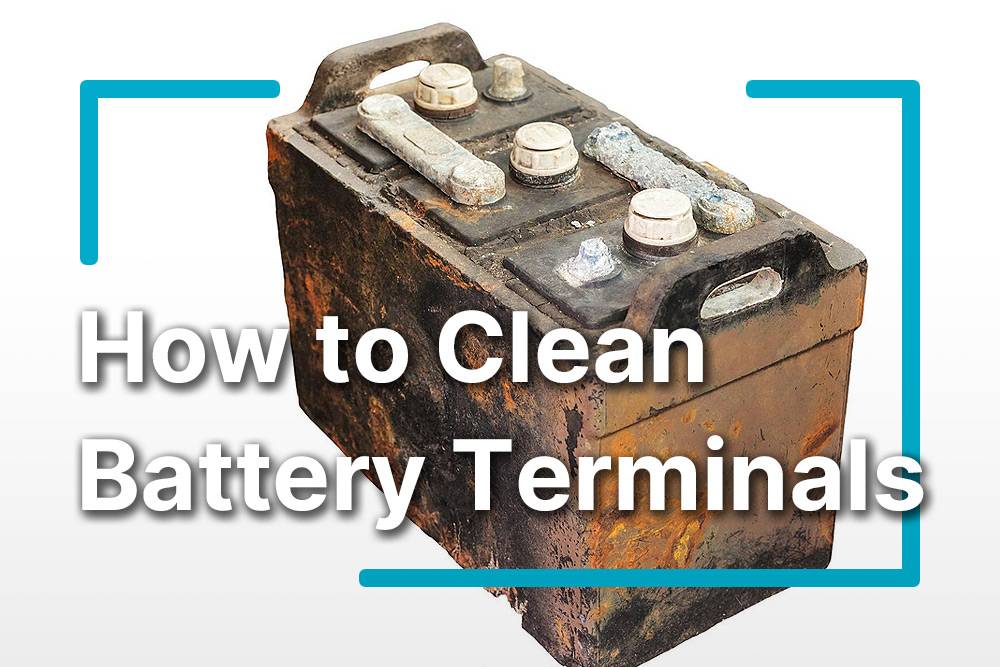
Blog
How to Clean Battery Terminals: Essential Solutions and FAQs

Cleaning battery terminals properly is essential to ensure strong electrical connections and prolong battery life. This involves gathering the right materials, carefully disconnecting the battery, removing corrosion, neutralizing residue, protecting the terminals, and maintaining cleanliness regularly. Using suitable tools and safety measures prevents damage and hazards during the process.
What materials and tools do I need to clean battery terminals?
To clean battery terminals, you need baking soda, water, an old toothbrush or wire brush, petroleum jelly or dielectric grease, protective gloves, safety goggles, a rag, and optionally a battery terminal cleaner spray. These materials help neutralize acid, scrub corrosion, protect terminals, and ensure personal safety while working with the battery.
How do I safely disconnect and inspect my battery?
Always turn off the engine before starting. Disconnect the negative (black, -) cable first, then the positive (red, +) cable to avoid sparks. Inspect terminals and cables for corrosion, cracks, or swelling. If the battery case is swollen or leaking, replace it instead of cleaning. This careful approach prevents short circuits and injury.
What are the best techniques to clean battery terminals effectively?
Mix one tablespoon of baking soda in one cup of water to make a cleaning solution. Dip a toothbrush or wire brush in this solution and scrub the terminals and cable connectors thoroughly to remove corrosion buildup. Repeat scrubbing while rinsing the brush until terminals look clean.
How do I neutralize and remove corrosion from battery terminals?
After scrubbing, rinse terminals gently with clean water or use a damp rag to wipe off residual baking soda paste and loosened corrosion. Dry terminals completely with a clean cloth. Applying a small amount of petroleum jelly on the dry terminals prevents new corrosion and improves electrical contact.
How do I protect and maintain battery terminals after cleaning?
Apply a thin layer of petroleum jelly or dielectric grease to terminals after cleaning to inhibit corrosion. Regularly check terminals and keep them dry. Using battery terminal protectors or sprays can further prevent corrosion buildup over time, ensuring consistent battery performance.
How often should I clean my battery terminals?
Cleaning frequency depends on usage and environmental factors, but ideally, inspect and clean your battery terminals every 3 to 6 months. In humid or salty environments, more frequent cleaning may be required to prevent corrosion and maintain optimal battery function.
Which tools are best for safely cleaning battery terminals?
Soft-bristle brushes like old toothbrushes are ideal for gentle but effective cleaning. Wire brushes or battery terminal cleaning tools work well for stubborn corrosion. Always use insulated tools, wear gloves, and eye protection to minimize risk when handling batteries.
How can I prevent battery terminal corrosion?
Prevent corrosion by keeping terminals clean and dry, applying protective coatings like petroleum jelly or dielectric grease, and regularly inspecting your battery. Avoid spilling battery acid and clean up any leaks immediately. Using sealed batteries or terminal covers also reduces exposure to moisture and contaminants.
Redway Power Expert Views
“Maintaining clean battery terminals is crucial for ensuring the longest possible life and reliable performance of your battery system,” says a specialist from Redway Power, a leading lithium battery OEM with extensive experience. “Using proper cleaning techniques combined with protective treatments can prevent frequent failures caused by corrosion. Redway Power’s commitment to quality means we advise regular maintenance and employing manufacturing-grade materials that resist corrosion for superior durability.”
Conclusion
Proper cleaning and maintenance of battery terminals are essential for safety, functionality, and longevity. By using the right materials, following safe procedures, and applying protective measures, you can ensure your battery delivers optimal power with minimal interruption. Regular inspection and cleaning every few months prevent corrosion buildup that can degrade electrical connections.
FAQs
What should I do if my battery is swollen or leaking?
If your battery shows swelling, cracks, or leaking fluid, do not attempt to clean it. Replace the battery immediately, as these signs indicate it is unsafe and near failure.
Can I use other household products besides baking soda?
Baking soda is preferred for neutralizing battery acid safely. Some recommend cola products for cleaning corrosion, but these may leave sticky residues and are less ideal. Avoid acidic cleaners like vinegar on acidic battery terminals.
Is it necessary to disconnect the negative cable first?
Yes, always disconnect the negative cable first to create a safer working environment and prevent short circuits or sparks.
Does applying too much petroleum jelly hinder battery performance?
Yes, use petroleum jelly sparingly. Excess amounts can insulate the terminal and decrease electrical conductivity.
How do environmental conditions affect battery terminal corrosion?
High humidity, salty air, and extreme temperatures accelerate corrosion. Regular maintenance is more important in these environments to preserve battery health.



